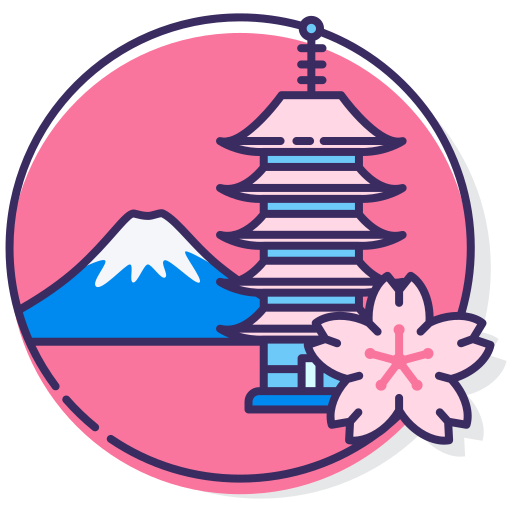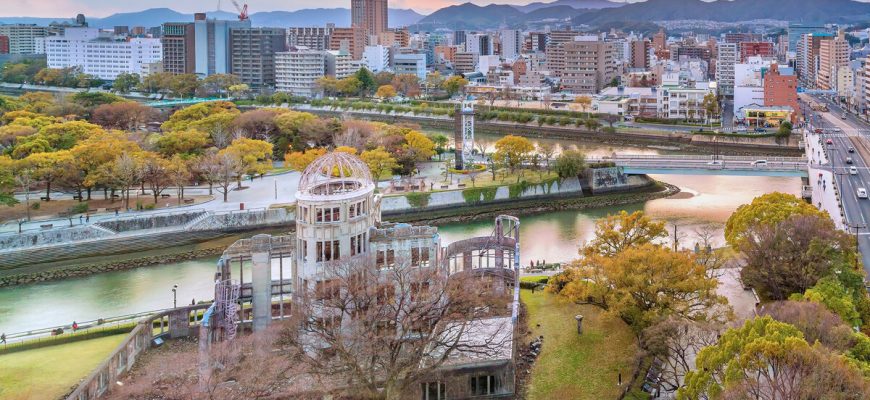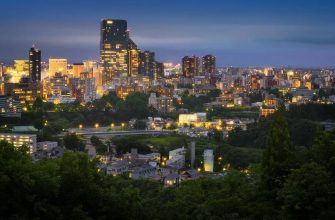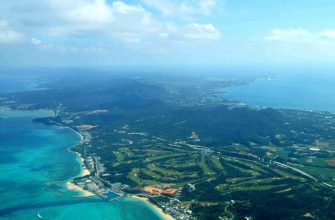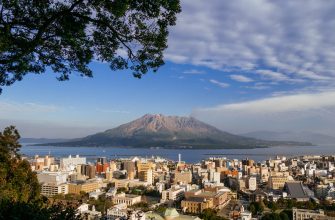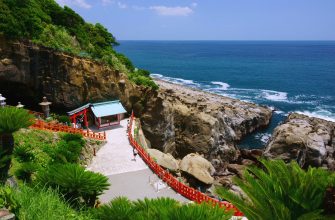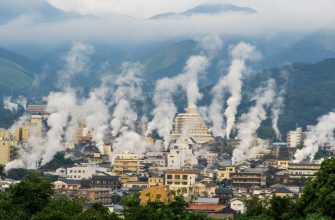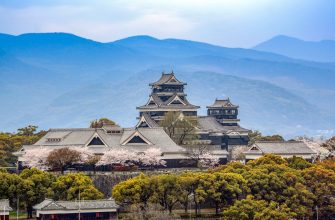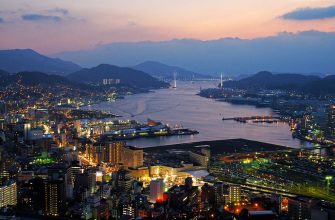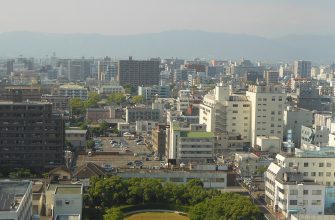Hiroshima Prefecture, located in the Chugoku region of Japan, holds a poignant place in history as the first location on Earth to experience an atomic bombing. Its metamorphosis into a beacon of peace and resilience is palpable when one visits iconic landmarks such as the Peace Memorial Park and Museum. This transformation articulates a narrative of hope and the unyielding human spirit that resonates with travelers from across the globe.
Beyond its historical narrative, Hiroshima offers a diverse tapestry of experiences, from the sacred Itsukushima Shrine with its famous floating torii gate to the lush landscapes of Sandankyo Gorge. Gastronomy enthusiasts can savor the unique flavors of Hiroshima-style okonomiyaki, while those seeking mementos can find exquisite local crafts like intricate pottery and handmade paper, each telling the story of Hiroshima’s rich cultural heritage.
Insights into Hiroshima
Key Points of Interest
Hiroshima, nestled in the western segment of Honshu, Japan’s largest island, stands as a symbol of resilience and renewal post the catastrophic atomic bomb devastation it endured. Today, it pulses with life, presenting a cornucopia of experiences that cater to the varied tastes of visitors.

- Itsukushima Shrine: Situated on the scenic Miyajima Island, this sanctuary is celebrated for its “floating” torii gate, which creates an illusion of standing on water at high tide, signifying a gateway between the spirit and the human worlds.
- Hiroshima Peace Memorial Park: At the heart of the city lies a tranquil expanse dedicated to the memory of nuclear warfare’s victims and the enduring hope for peace, centered around the Atomic Bomb Dome, a stark ruin and a World Heritage Site.
Culinary Delights:
- Hiroshima-style okonomiyaki: A tantalizing savory pancake layered with cabbage, noodles, and assorted toppings, offering a delightful fusion of flavors and textures.
- Seto Inland Sea Oysters: Prized for their freshness and taste, reflecting the bounty of the local waters.
- Momiji Manju: These maple leaf-shaped pastries, filled with smooth red bean paste, are a sweet nod to Hiroshima’s cultural essence.
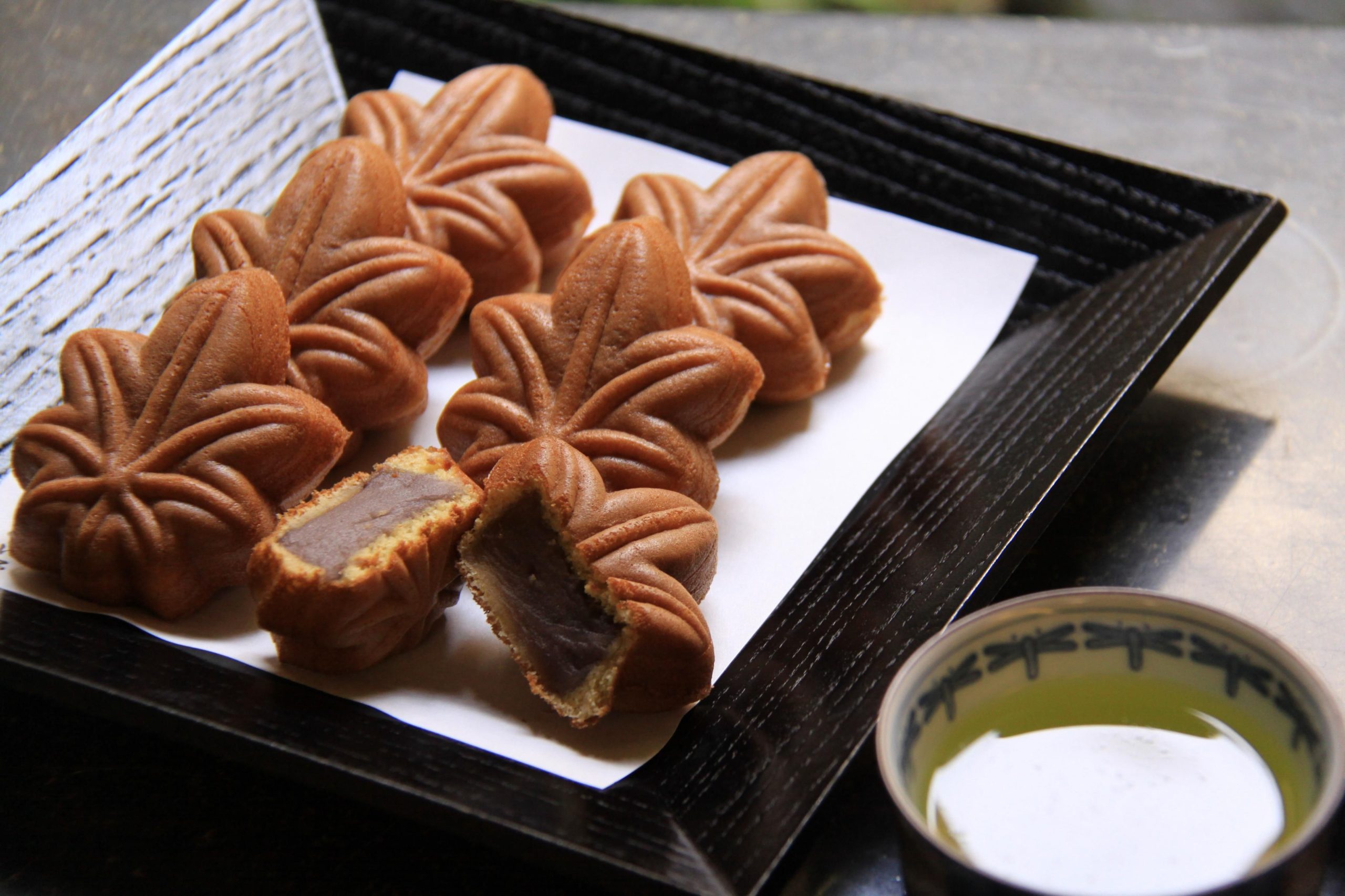 Sports enthusiasts and nighttime revelers will find Hiroshima’s vibrant baseball scene and lively entertainment districts a source of dynamic excitement. Meanwhile, nature lovers will appreciate the expansive parks and outdoor activities available, including hiking, cycling, and water-based adventures in the surrounding landscapes of islands and sea.
Sports enthusiasts and nighttime revelers will find Hiroshima’s vibrant baseball scene and lively entertainment districts a source of dynamic excitement. Meanwhile, nature lovers will appreciate the expansive parks and outdoor activities available, including hiking, cycling, and water-based adventures in the surrounding landscapes of islands and sea.
Hiroshima’s multifaceted allure, steeped in history and culture, offers a profound journey to travelers seeking to experience Japan’s storied past and its dynamically evolving presence.
Historical Significance
Hiroshima Prefecture sits as a testament to resilience and remembrance in the context of global history. The atomic bombing on August 6, 1945, marks a sobering threshold in warfare, emphasizing the cataclysmic potential of nuclear armament and thus shaping a new post-war reality.
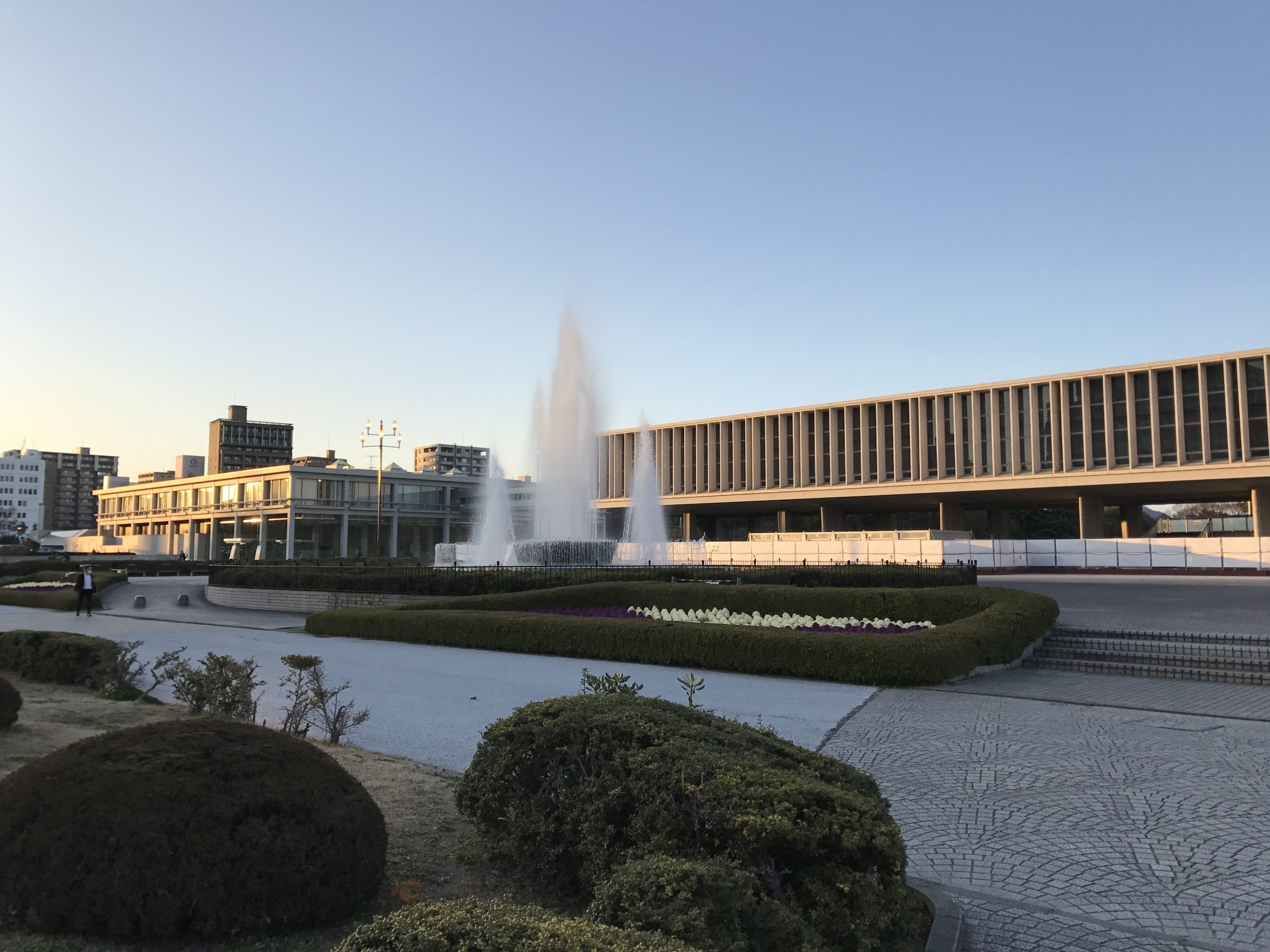
Hiroshima Peace Memorial Museum provides an informative insight into the timeline of the atomic bombing and its extensive ramifications. Exhibits encompass artifacts and narratives from survivors, portraying a vivid image of the tragedy.
Adjacent to the museum, Peace Memorial Park is home to several monuments including the Cenotaph. This monument bears a commitment to memory, inscribed with the pledge: “Let all the souls here rest in peace, for we shall not repeat the evil.”
The park’s landscape is also marked by the Atomic Bomb Dome, a structure that withstood the explosion, now symbolizing the hope for enduring peace.
Furthermore, the footprint of the atomic devastation is witnessed in memorials like the Children’s Peace Monument, inspired by a young girl named Sadako and her story with paper cranes, serving as an emblem of innocent suffering and a desire for peace.
Visitors to these sites engage with profound lessons on peace and humanity, honoring those affected by the bombing, and endorsing a narrative to build a future rooted in understanding and cooperation.
Simple, yet powerful, each element within the city, including the designation as a City of Peace, echoes the indispensable lesson: learning from history to steer towards a harmonious and secure world.
Insights into Traditional and Historical Japan
Sacred Sites and Ceremonial Structures
Hiroshima is replete with sacred sites, such as the revered Itsukushima Shrine on Miyajima Island, notable for its majestic gate seemingly afloat at high tide. Acknowledged as a World Heritage Site, this shrine stands as a pinnacle of Japanese construction and religious significance.
Historical Relics
A plethora of historical relics in Hiroshima tell the story of Japan’s past. The Peace Memorial Museum provides an essential look at artifacts from a pivotal moment in history, displaying items and narratives from the fateful day of the atomic bombing.
Exploration of Local Customs
Visitors have the chance to dive into a range of cultural traditions. From engaging in the finesse of tea ceremonies to the artistry behind soba noodle creation, Hiroshima provides hands-on opportunities to explore the nuances of Japanese customs, including vivid celebrations at the annual Flower Festival.
Commemorative Landmarks
Throughout the region, monuments stand in remembrance of Japan’s complex history. The Atomic Bomb Dome is an especially poignant site, its ruins a stark testament to the impact of nuclear warfare. The Children’s Peace Monument also shares a moving tribute, honoring the young lives lost and serving as an emblem of hope for a peaceful future.
Architectural Wonders
Traversing Hiroshima, one encounters illustrious examples of Japanese architectural heritage. Hiroshima Castle, or Carp Castle, embodies this, with its reconstructed form functioning as a museum that delves into its storied past and architectural evolution from its establishment in the late 16th century.
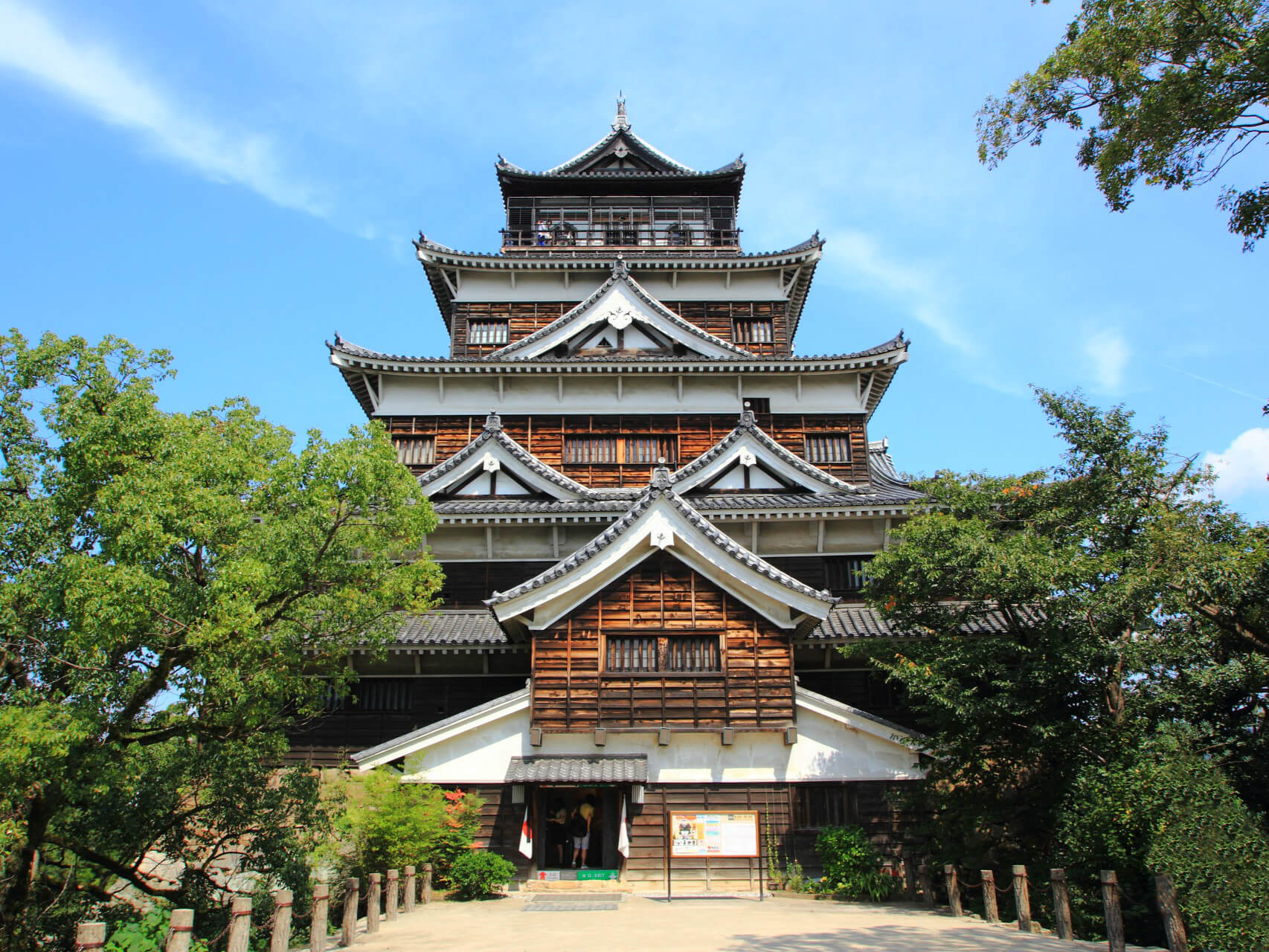
Notable Hiroshima Destinations
Hiroshima Metropolitan Area
Within the heart of the Hiroshima Prefecture lies its bustling capital, replete with historical significance and cultural monuments. The Hiroshima Peace Memorial Park stands as a solemn remembrance of the atomic bomb’s impact, headlined by the iconic Atomic Bomb Dome, an enduring symbol of resilience and a UNESCO World Heritage site. Visitors can also explore relics of the past at Hiroshima Castle and find tranquility in the landscaped beauty of the Shukkei-en Garden.
The Revered Island of Miyajima
- Itsukushima Shrine: Renowned for its majestic torii gate that, during high tide, seems to elegantly float on the water’s surface.
- Mount Misen: Offers breathtaking panoramic views and is accessible via hiking trails or a ropeway.
- Wildlife Encounters: Friendly deer roam freely, enhancing the island’s serene ambiance.
Miyajima Island is also just a brief ferry voyage from Hiroshima Bay, making it a convenient and picturesque escape.
The Charm of Onomichi
Onomichi captivates visitors with its scenic, temple-dotted hillsides and old-world charm. Key highlights include:
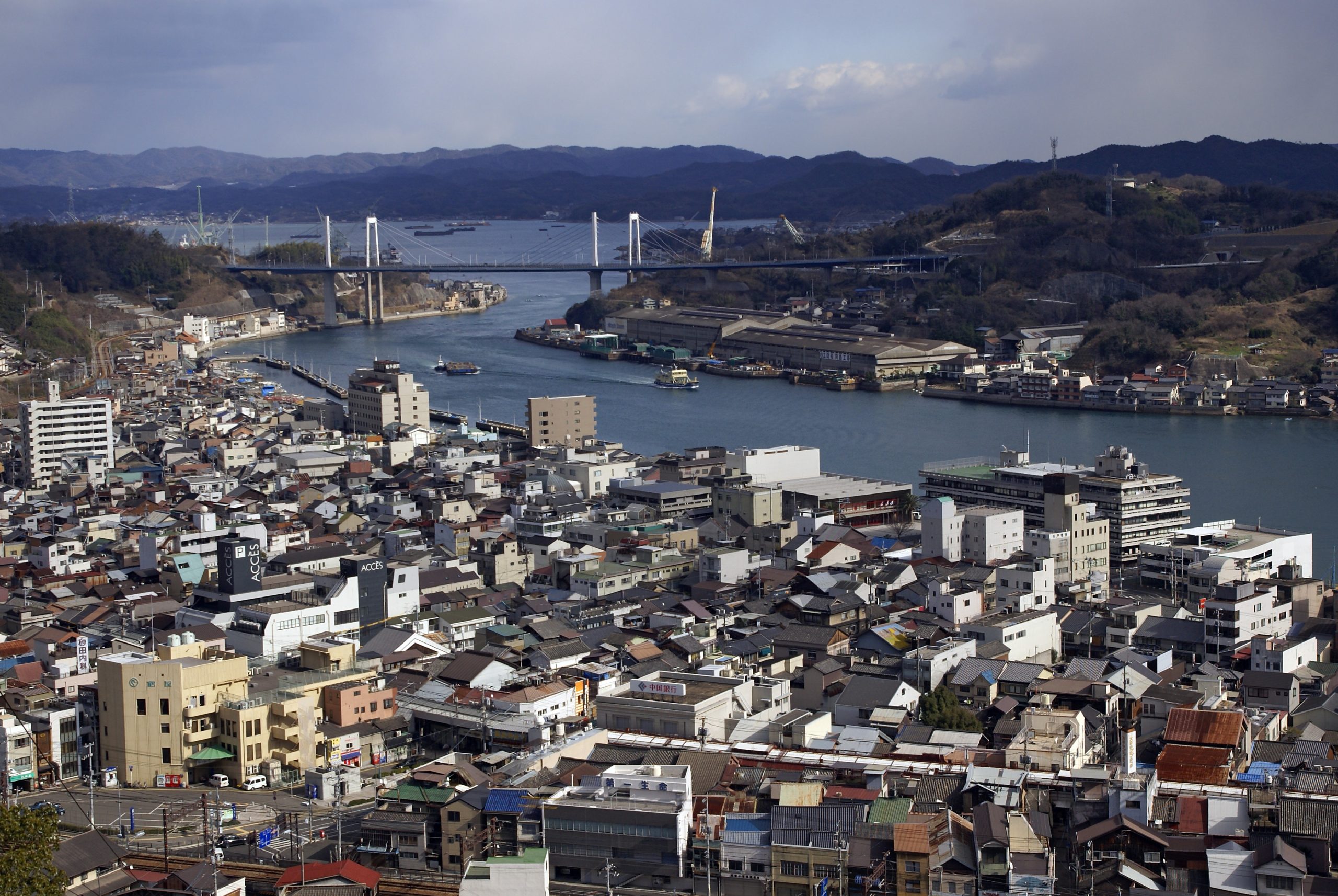
- Senko-ji Temple: Overlooking the city, it’s a site of spiritual significance and scenic vistas.
- Shimanami Kaido: A haven for cyclists, this route affords stunning sea views as it weaves through islands connecting the Japanese archipelago.
Maritime Heritage of Kure
Kure, a storied naval port, proudly hosts the Yamato Museum, where visitors can delve into Japan’s maritime legacy and view an impressive battleship replica. Don’t miss Rabbit Island nearby, where countless friendly rabbits offer a unique interactive experience.
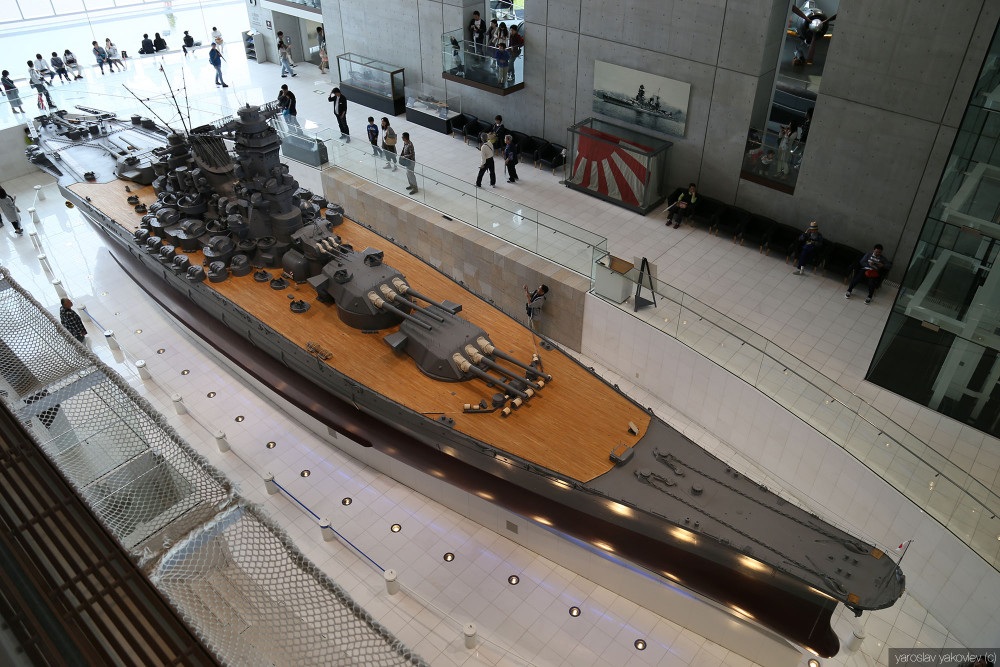
Historical Takehara
Famed for its preserved streets harkening back to the Edo period, Takehara offers an intimate look into Japan’s rich history. Noteworthy attractions include:
- Taishakukyo Gorge: A natural marvel perfect for hiking enthusiasts.
- Daisho-in Temple: A historic temple complex surrounded by strikingly serene gardens.
Each of these destinations in Hiroshima Prefecture provides an immersive experience, from historical explorations to enjoying the natural landscapes and engaging with local wildlife.
Outdoor Activities
Hiroshima Prefecture is a hub for nature enthusiasts and adventure seekers. The region boasts a rich tapestry of scenic landscapes, making it an ideal spot for a variety of recreational pursuits.
Explore Hiking Trails: Travelers can ascend Mount Misen on Miyajima Island, a journey that rewards climbers with breathtaking panoramas after a two-hour trek. Another gem is the Sandankyo Gorge, where hikers traverse alongside waterfalls and pristine waters.
- Mount Misen Hike: Approx. 2-hour climb with panoramic summit views.
- Sandankyo Gorge: Natural beauty with waterfalls and clear streams.
Cycling Adventures: The Shimanami Kaido, a picturesque route that crosses the Seto Inland Sea, and various tours offer a cyclist’s paradise with equipment rental options for solo explorations.
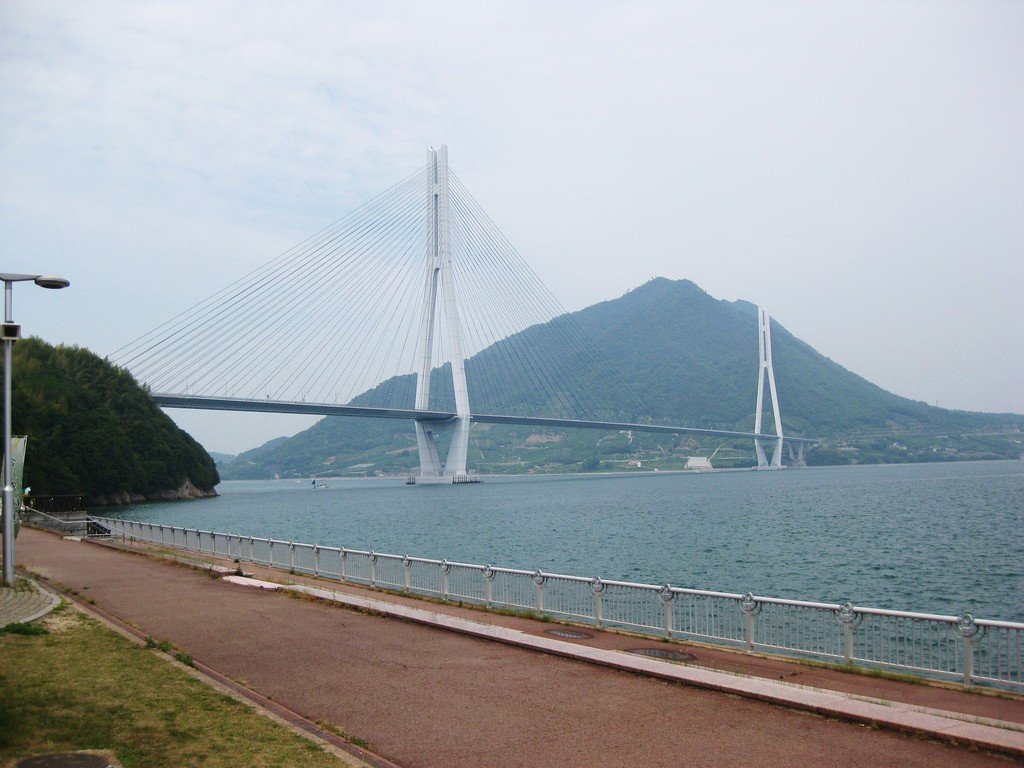
- Cycling Tours: Guided or self-guided tours across scenic routes.
- Bike Rentals: Available for personal itinerary planning.
Embrace Nature: Visitors can wander amidst the changing hues of momiji (maple leaves) in fall, and enjoy the bloom of sakura (cherry blossoms) in spring. Animal lovers will find the Asa Zoological Park or a trip to Okunoshima, also known as Rabbit Island, particularly delightful.
Hot Springs Relaxation: For relaxation, numerous onsen (hot springs) in Hiroshima City and surrounding areas like Kure City offer tranquil retreats.
- Hiroshima City Onsen: Numerous hot spring options within the city.
- Kure City Onsen: A short day trip for a serene hot spring experience.
Seasonal Views: Whether it’s the vibrant fall colors in autumn or the soft pinks of sakura in spring, Hiroshima’s natural beauty provides a picturesque backdrop for all activities. A ride on the ropeway offers sweeping views, especially enchanting during these peak seasons.
Engage in these experiences to fully immerse yourself in Hiroshima’s splendid outdoors.
Exploring Flavor in Hiroshima
Hiroshima offers a diverse palette of flavors that provides a genuine insight into its culture and tradition. A journey through Hiroshima’s gastronomy is incomplete without experiencing its signature dish, Hiroshima-style okonomiyaki. This layered savory pancake intermingles a variety of ingredients including cabbage, meats, and seafood, finished with a layer of fried noodles, creating a texturally rich and hearty dish.
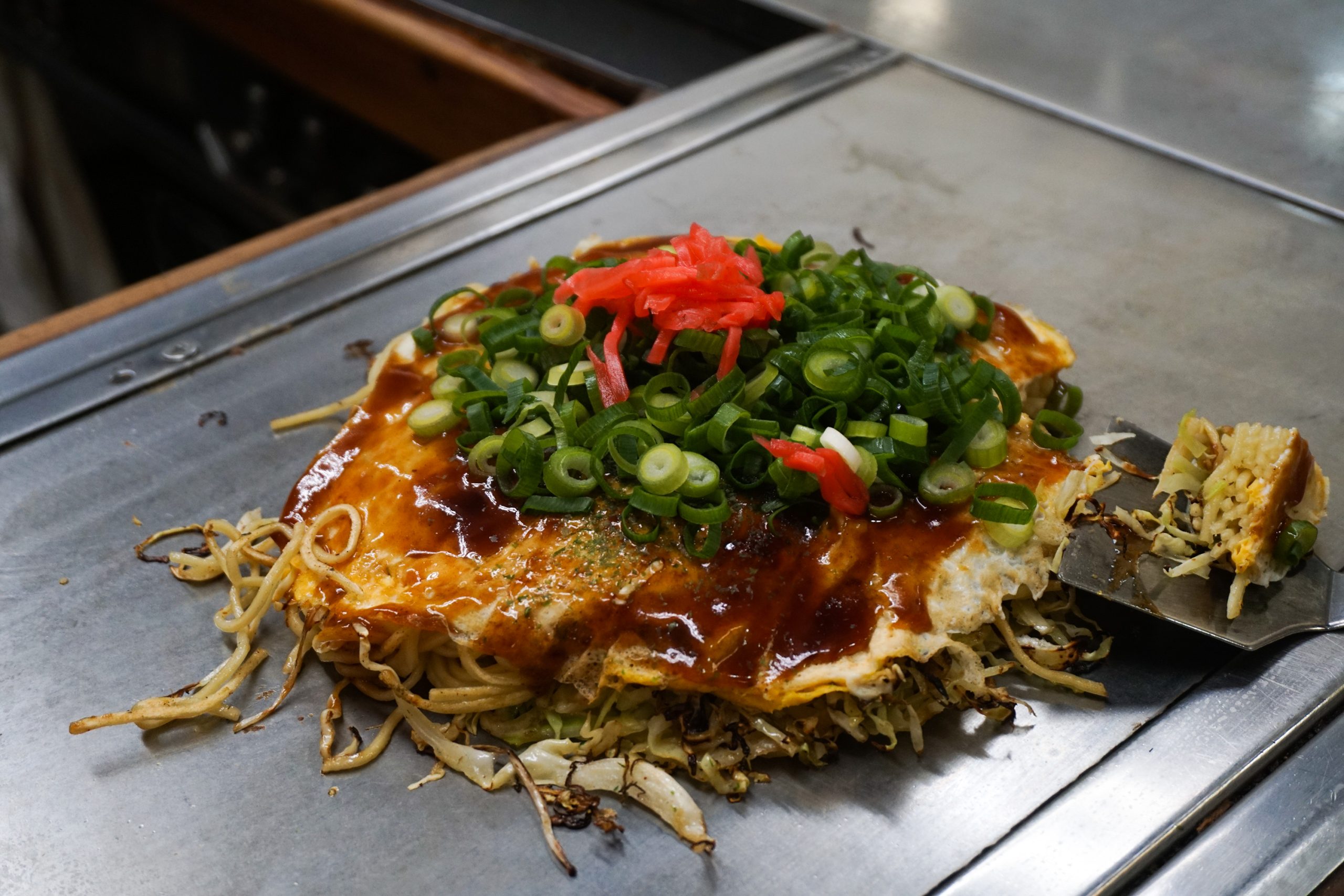
Okonomi-mura is a renowned destination where gourmets can indulge in this regional specialty, with an array of establishments dedicated to perfecting the art of okonomiyaki.
Seafood aficionados will revel in Hiroshima’s offerings, especially its oysters. Revered across Japan for their quality, Hiroshima oysters are available in myriad forms, from sizzling grilled oysters to hearty oyster rice bowls and traditional oyster hot pots. The ideal season to savor these oceanic delights spans from September to April.
- Grilled Mackerel – Mackerel glazed with a miso-based sauce, creating a balance of sweet and savory.
- Anago Meshi – Delicate sea eel served atop a bed of rice, a local favorite.
For those with an inclination towards sweetness, Momiji Manju is a must. Resembling a maple leaf, this confectionery is a perfect combination of delicate pastry and sweet red bean paste, encapsulating Hiroshima’s culinary craftsmanship in every bite.
Retail Therapy in Hiroshima
Treasures and Keepsakes
Throughout Hiroshima, shoppers are presented with a plethora of choices ranging from the traditional to the contemporary. The Hondori Shopping Arcade remains a favorite for those looking to acquire anything from stylish apparel to unique trinkets, with a diverse selection of shops surrounded by inviting eateries.
For cultural memorabilia and edible delights, the Miyajima Omotesando Shopping Street is a must-visit. Wander along the picturesque lane and indulge in the array of shops showcasing local craftsmanship and tempting treats.
Hiroshima Parco, on the other hand, offers an upscale retail experience with a multitude of fashion brands, tech gadgets, and a substantial gastronomic court.

Seeking something distinct to Hiroshima? Consider these sought-after items:
- Maple Leaf-shaped Treats: Indulge in a Momiji Manju, a delectable cake resembling a maple leaf, filled with smooth bean paste.
- Savory Pancake Essentials: Take home the irreplaceable Hiroshima-style Okonomiyaki Sauce to recreate the famous savory pancake’s authentic flavor.
- Baseball Fan Finds: Embrace sports enthusiasm with Hiroshima Carp Baseball Merchandise, an array of team-themed goods from clothing to collectibles.
Hiroshima offers assorted shopping experiences for every taste, whether seeking a tangible memory from their trip or simply enjoying the retail landscape.
Lodging Options
Established Hotels
Travelers seeking a touch of luxury can find solace in upscale establishments. The Sheraton Grand Hiroshima and the ANA Crowne Plaza Hiroshima stand out with their well-appointed rooms, comprehensive amenities, and city vistas.
- Sheraton Grand Hiroshima: Spacious accommodations, cityscape views
- ANA Crowne Plaza Hiroshima: Cozy lodging, fitness and dining availability
Mid-tier travelers have choices like the Comfort Hotel Kure, noted for its cleanliness, hospitable service, and strategic locale.
- Comfort Hotel Kure: Neat chambers, affable personnel, prime position
Traditional Inns
For an authentic Japanese stay, traditional inns called ryokans provide cultural immersion.
- Iwaso Ryokan: Situated on Miyajima Island, it features classic Japanese rooms, thermal baths, and picturesque gardens.
These ryokans present a chance to experience Japan’s rich traditions with the comfort of modern amenities.
Economical Hostels
Thrifty travelers can opt for hostels, offering affordability without compromising on cleanliness or comfort.
- Guesthouse Akicafe Inn: Provides neat, snug rooms along with communal cooking facilities and a welcoming common space.
Regardless of one’s financial plan or preference, Hiroshima prefecture caters to a broad spectrum of lodging needs.
Getting Around Hiroshima
Streetcar Network
Trams offer a quaint way to navigate central Hiroshima with six distinct lines winding through the city. Hiroshima is unique for its eclectic mix of over 270 tramcars, including both local and European models. Tourists often enjoy traveling on these, particularly on the domestically produced Green Mover Max.
High-Speed Rail Connections
The Shinkansen, known internationally as the bullet train, is renowned for connecting Hiroshima to other principal cities with remarkable speed. It facilitates quick travel to Osaka, Kyoto, and Fukuoka via the Sanyo Shinkansen and extends to Kagoshima on southern Kyushu through the Kyushu Shinkansen. Depending on the train type, journeys can be as swift as 80 minutes, though the fastest trains may not accept the JR Pass.
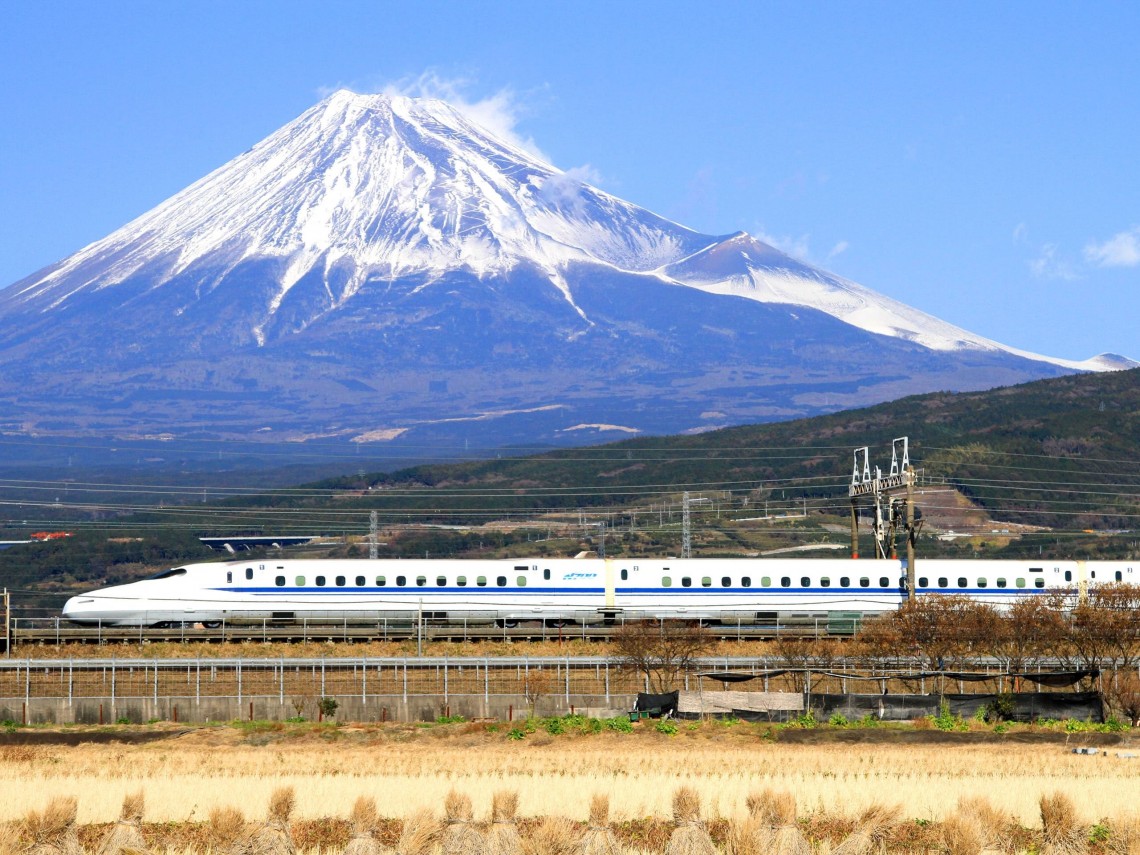
Coach Services
Buses are integral to Hiroshima’s public transport, bridging the gap to remote regions and providing flexible travel for groups. Key operators include Hiroshima Bus, Chugoku JR Bus, and Chugoku Bus, ensuring that all areas of the prefecture are accessible.
Personal City Transfer
For nighttime or group travel, taxis are readily available, fitted with automated doors, a distinct feature of Japanese taxis. Metered rates ensure that fares remain transparent and fair.
Self-Guided Tours
Bicycles can be rented for those preferring to discover Hiroshima at a leisurely pace. Numerous rental outlets are found in Hiroshima City and at major points of interest, allowing visitors to explore with freedom.
| Transportation Mode | Recommended for | Notes |
|---|---|---|
| Trams | Sightseers, city explorers | Unique tram variety, including the Green Mover Max |
| Shinkansen | Long-distance, intercity travel | Fast travel times, some exclusions with the JR Pass |
| Buses | Groups, remote area travel | Comprehensive coverage, multiple operators |
| Taxis | Night travel, groups | Metered fares, automated doors |
| Bicycles | Slow-paced exploration | Flexible rental options, ideal for leisurely touring |
Whether arriving at Hiroshima Station or seeking an adventure within the city, abundant public transportation options and tours ensure that every visitor can find their preferred method of travel.
Museums in Hiroshima Prefecture
Exploring the rich tapestry of art, history, and technological innovation is a rewarding experience in Hiroshima Prefecture, with several exemplary institutions:
- The Peace Memorial Museum stands as a solemn repository of history dedicated to the atomic bomb’s devastation. By presenting artifacts, harrowing survivor tales, and stark photo evidence, it emphasizes the gravity of peace.
- Automobile enthusiasts will admire the Mazda Museum, located at the brand’s headquarters. The institution highlights the evolution of Mazda, displaying classic models, deep-diving into their mechanical brilliance, and occasionally offering a glimpse into futuristic designs.
- Art aficionados can revel in the impressive collection at the Hiroshima Prefectural Museum of Art, one of western Japan’s sizable galleries. With more than 10,000 pieces ranging from Western to Japanese art, along with rotating special exhibits, visitors are treated to a vast cultural pursuit.
Further enriching the cultural landscape are additional destinations:
- Kure Maritime Museum is known for its naval exhibits, including the formidable Yamato battleship.
- Japan Maritime Self-Defense Force Kure Museum offers insights into Japan’s maritime defenses with considerable depth.
- Hiroshima Museum of Art housing international and local masterpieces.
- Hiroshima City Museum of Contemporary Art (MOCA) presenting cutting-edge artworks.
- A trip to the Numaji Transportation Museum reveals a diverse display related to the evolution of transport.
Each institution provides distinct experiences that cater to a variety of interests, from somber historical reflections to the delight of art and marvels of engineering.
Celebrations and Happenings
Select Hiroshima Festivals
Hiroshima, rich in heritage and traditions, offers a diverse array of celebrations attracting both locals and travelers alike. Delving into these occasions provides an authentic insight into the city’s cultural heartbeat.
Ushita Hoozuki Festival
In the warmth of July, the Ushita Hoozuki Festival envelops visitors in a welcoming ambience. Ideal for family outings, the event showcases traditional Japanese entertainment, including music and dance, alongside a spread of local culinary delights.
Portside Firework Extravaganza in Kure
Come August, the Port of Kure becomes the stage for a breathtaking spectacle of pyrotechnics. Renowned for being among Japan’s premier firework displays, this event draws throngs of spectators eager to witness the sky-blazing artistry reflected over the waters.
Fukuyama Seasonal Celebration
Spanning three lively days in August, the Fukuyama Seasonal Celebration hosts a vibrant blend of parades and performances, culminating in a captivating aquatic firework show that brilliantly marks the festival’s finale.
Kumano Brush Fair
Celebrated every September in brush-making capital Kumano, the Brush Fair pays homage to the craft of “fude” creation. Participants can enjoy folk performances and a march of individuals donned in classic Japanese attire, honoring the town’s revered artistic contribution.
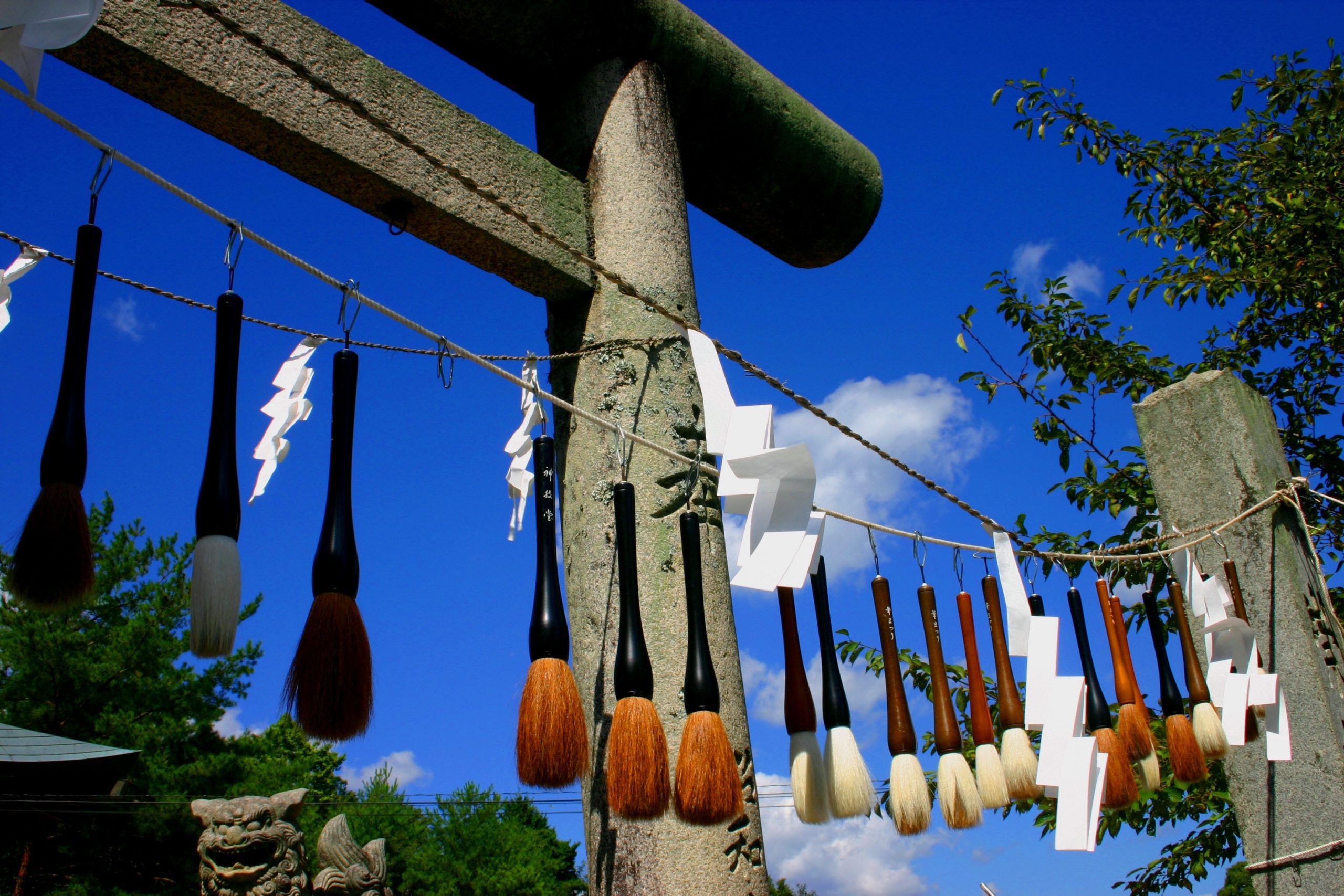
Spring Bloom Festivity
Coinciding with the blossoming of May, Hiroshima’s Spring Bloom Festivity marks the season with a jubilant fusion of parades, musical acts, and a bustling flower bazaar. A serene cherry blossom viewing in Hiroshima Peace Memorial Park is among the festivity’s cherished activities.
In conclusion, experiencing these festivals and events is a cornerstone for those seeking to immerse in the unique heritage and communal spirit of Hiroshima. Whether one has a penchant for fireworks, a taste for traditional fare, or a curiosity for cultural performances, these gatherings promise a memorable encounter with the heart of Hiroshima.
Practical Advice for Navigating Hiroshima
Exploring the City
To fully experience the vibrant environment of Hiroshima, travelers can rely on the city’s public transport system, consisting of a comprehensive network of buses and trains. Families might find it beneficial to opt for the Hiroshima Bus and Tram Pass for unlimited rides, facilitating hassle-free travel to the area’s key points of interest.
Insightful Feedback and Sustainable Planning
Scanning through traveler feedback on platforms such as TripAdvisor or JapanTravel can provide valuable insight into the activities and sights in Hiroshima. This can aid in curating a more enjoyable visit, especially if a goal is to partake in either short guided tours or extended full-day outings.
Engaging Young Explorers
Hiroshima caters to families with venues like the Hiroshima Children’s Museum for the little ones, whereas the Mazda Museum offers interactive engagement for older children. A must-see is Miyajima Island, an ideal place to encounter cultural landmarks and observe wildlife.
Embracing Nature and Adventure
Adventure seekers have their fill with cycling the Shimanami Kaido Expressway, which affords an unrivaled island-hopping journey. For a more serene yet equally captivating experience, Sera Kogen Flower Village presents a stunning display of floral beauty, particularly its moss phlox and nemophila blooms.
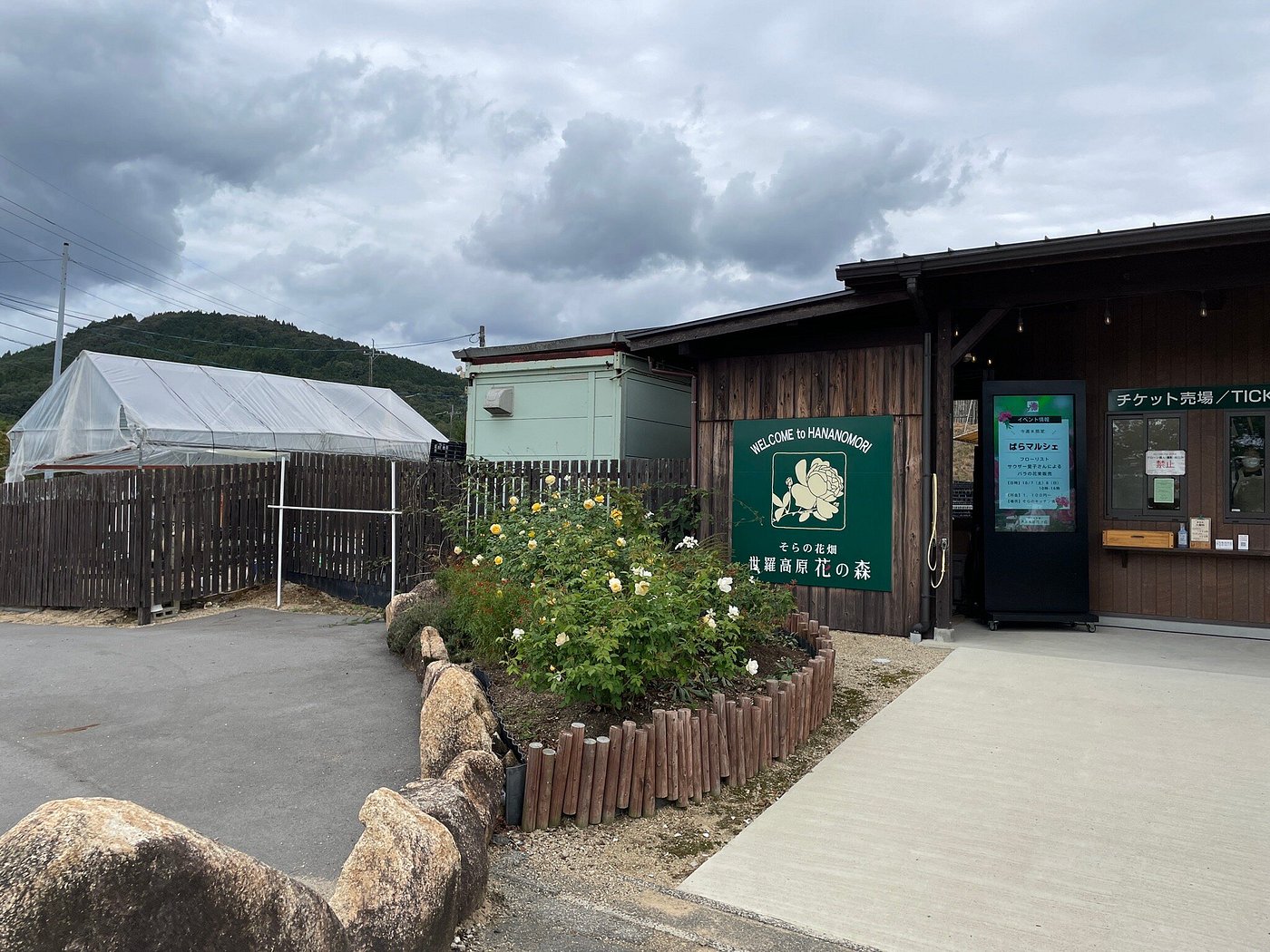
Embracing these travel strategies will serve to enhance one’s expedition through Hiroshima, ensuring a memorable exploration of its offerings.
Key Inquiries About Hiroshima
Significance of Hiroshima Prefecture
Hiroshima Prefecture holds a poignant place in history as the first location to endure an atomic bombing. Today, it stands as a beacon for peace and perseverance. The region is also celebrated for its culinary offerings, specially the Hiroshima-style okonomiyaki, locally farmed oysters, and traditional sake.
Adequate Duration for a Hiroshima Visit
To embrace the essence of Hiroshima Prefecture, a stay of approximately three to four days is advised. This timeframe allows visitors to immerse themselves in Hiroshima City’s prominent sites and explore the cultural richness of Miyajima Island, Onomichi, and the picturesque Seto Inland Sea.
Merits of Visiting Hiroshima Castle
The reconstructed Hiroshima Castle is a significant cultural attraction, offering educational insights through its museum and panoramic city views. Despite its wartime destruction, the castle has been meticulously restored, inviting visitors to reflect on Hiroshima’s historical narrative.
Possibility of a Hiroshima Day Trip
While feasible as a day excursion from cities like Osaka or Kyoto, it’s recommended to allocate at least one overnight stay in Hiroshima. This allows a more comprehensive exploration of key landmarks such as the Peace Memorial Park, Museum, and the reconstructed Hiroshima Castle.
Complimentary Activities in Hiroshima
Hiroshima is home to several no-charge attractions including:
- Peace Memorial Park and Museum: A pivotal site commemorating the atomic bombing.
- Miyajima Island: Offers a tranquil environment ideal for leisurely walks.
- Shukkei-en Garden: A place of scenic beauty, perfect for relaxation.
- Atomic Bomb Dome: A stark reminder of the past, now a symbol of hope as a UNESCO World Heritage Site.
Unmissable Experiences in Hiroshima
Visitors to Hiroshima shouldn’t miss the opportunity to:
- Absorb the poignant history at the Peace Memorial Park and Museum.
- Witness the iconic Itsukushima Shrine on Miyajima Island.
- Reflect at the historic Hiroshima Castle.
- Relax in the gardens of Shukkei-en.
- Indulge in local cuisine such as Hiroshima-style okonomiyaki and fresh oysters.
- Journey along the Shimanami Kaido, famed for its stunning cycling route.
